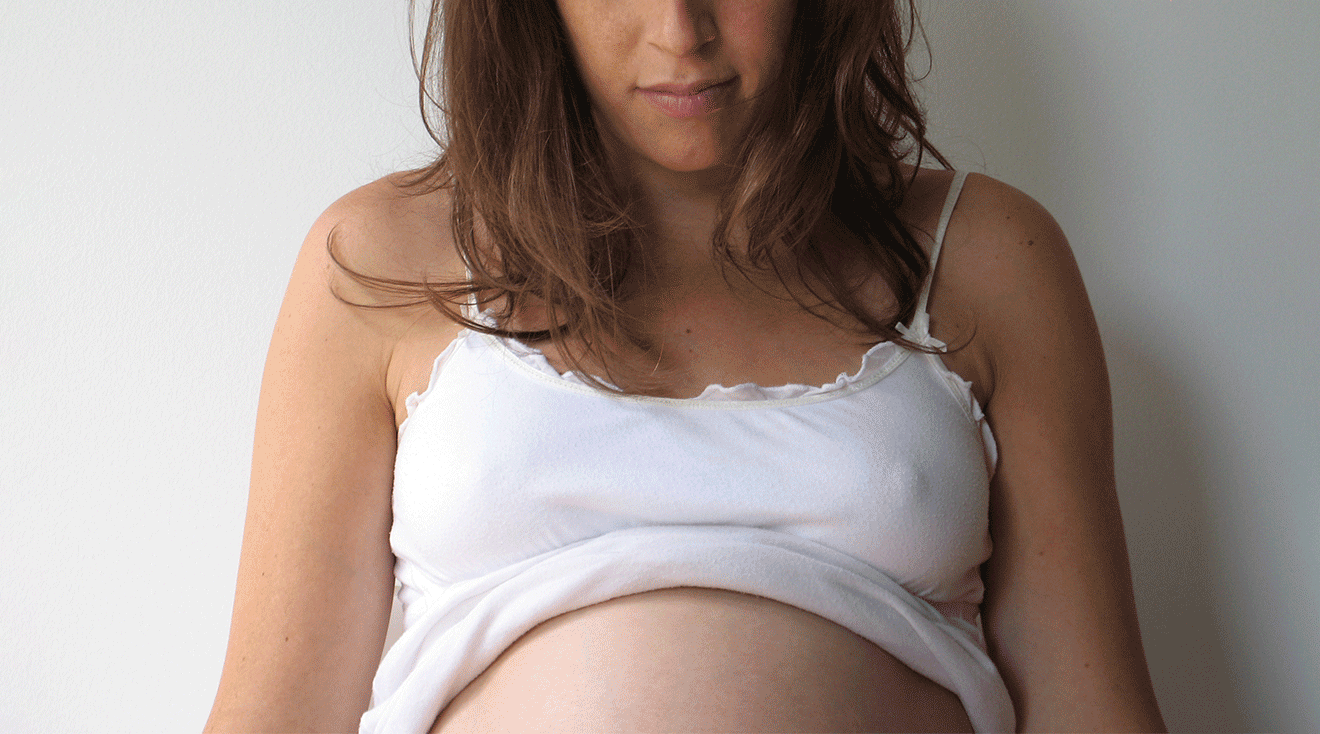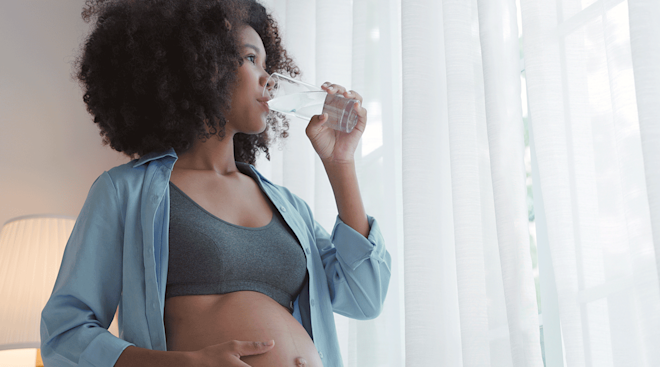Early Pregnancy Signs: Darkening Areolas
If you’ve noticed enlarged or dark areolas (the area around your nipples), you may be witnessing one of the first signs of pregnancy. But why do darkening areolas during pregnancy happen? And should you be concerned? The good news is that this is usually completely normal and can occur as early as a week or two after conception. Want to get the scoop on this surprising early pregnancy symptom? Read on to find out more about the causes of dark areolas—and when to seek medical attention.
If you’ve suddenly noticed darkening areolas during pregnancy, you might feel concerned or confused. So why do nipples get darker during pregnancy? Like many pregnancy symptoms and side-effects, dark or black areolas are most likely a result of your rising levels of hormones—namely, estrogen and progesterone. These two hormones may increase the production of pigment in your skin.
“Some scientists believe there may have been an evolutionary purpose for the growth and darkening of the areolas, which was to help the newborn baby find the nipple easier and facilitate latching,” explains Temeka Zore, MD, a California-based ob-gyn and reproductive endocrinologist with Spring Fertility in San Francisco.
It’s also not just dark areolas that you might begin to see in early pregnancy—the area immediately surrounding your areolas may begin to darken as well, almost resembling a web, which can make the areola look even bigger, says Sara Twogood, MD, an ob-gyn at Cedars-Sinai Medical Center in Los Angeles.
Some women may also notice bumps (resembling goose-bumps) pop up on the perimeter of their areolas. These are called Montgomery tubercles, sometimes also called Morgagni tubercles, and they become more visible during pregnancy and breastfeeding because your breasts get larger, Twogood says. Those Montgomery tubercles are your friends! They help lubricate your nipples, which will be welcome when baby latches on to nurse. “Their purpose is to secrete oil during breastfeeding to decrease bacteria transfer to the baby,” Zore explains, “and to provide lubrication to your areola and nipples, which may become cracked or dry during breastfeeding.”
It’s important to know that there are a few other causes of dark areolas that have nothing to do with pregnancy. Some people experience darkening nipples as a result of taking certain oral contraceptives or during menstruation. It’s not common, but this could also be a sign of Paget’s disease, a rare form of breast cancer. It never hurts to reach out to your doctor if you experience darkening nipples or any other troubling symptoms.
Because darkening areolas during pregnancy may play a role in nursing, these changes often remain after giving birth, especially for women who choose to breastfeed. “The areola will continue to enlarge and darken throughout pregnancy, usually reaching their largest size at the time of birth,” Zore explains. “If you choose to breastfeed, your areolas will likely remain bigger and darker during breastfeeding.”
Suffice it to say: dark or black areolas are a natural part of pregnancy and aren’t generally considered a cause of concern–so there’s really no need to take medical action. While there are creams and ointments on the market that claim to lighten skin color, you shouldn’t try them without consulting your doctor first. They may not be safe for use during pregnancy or whilst breastfeeding.
What’s more, you may find that your areolas will lighten once you stop breastfeeding and your hormone levels return to normal. If the change bothers you, rest assured that your dark areolas and nipples will more or less go back to their normal size and color, Zore says, although it’s not unusual for the areolas to stay slightly darker than they were pre-pregnancy. When it’ll happen and to what degree will vary for each woman.
Most of the time, darkening areolas during pregnancy are harmless, but there are some additional symptoms to be aware of; if you experience any of the following, consult your doctor:
- Redness
- Lumps
- Flaking
- Peeling
- Itchiness
- Tingling
- Bloody or yellow discharge
Pregnancy can cause the skin to stretch, creating irritation and nipple fissures. But it’s always best to play it safe and seek out a doctor’s opinion about any nipple or breast concerns. And if you’re breastfeeding? The questions and complaints are probably just getting started! (Don’t worry, after the first few days and weeks, you’ll get the hang of it and the majority of your discomfort should subside.)
Frequently Asked Questions
When do areolas darken in pregnancy?
Typically, you’ll see darkening areolas during pregnancy in the second trimester, says the American College of Obstetricians and Gynecologists (ACOG). But due to hormonal changes, it’s also possible for this to happen much earlier.
Why do nipples get darker during pregnancy?
In short, nipples get darker during pregnancy due to the surge in hormones such as estrogen and progesterone increasing pigment production.
Remember, your body is going through a lot of changes, and hormones can do quite a number on you, so don’t panic if you notice your nipples suddenly have dark or black areolas—just be proactive and talk to your OB or midwife. It never hurts to ask questions or discuss concerns.
Please note: The Bump and the materials and information it contains are not intended to, and do not constitute, medical or other health advice or diagnosis and should not be used as such. You should always consult with a qualified physician or health professional about your specific circumstances.
Plus, more from The Bump:
Sara Twogood, MD, an ob-gyn at Cedars-Sinai Medical Center in Los Angeles. She’s also the author of Ladypartsblog.com, a site that covers topics relating to fertility and pregnancy. She received her medical degree from Albany Medical College.
Temeka Zore, MD, a California-based ob-gyn and reproductive endocrinologist with Spring Fertility in San Francisco. She earned her medical degree from Indiana University School of Medicine.
American College of Obstetricians and Gynecologists, Changes During Pregnancy
Learn how we ensure the accuracy of our content through our editorial and medical review process.
Navigate forward to interact with the calendar and select a date. Press the question mark key to get the keyboard shortcuts for changing dates.





















































